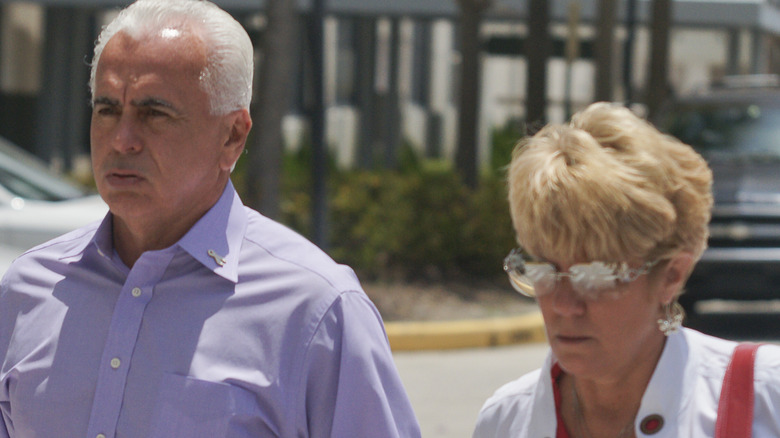The Casey Anthony Trial Used Odor As Evidence, A Legal First
In legal parlance, the Constitutional right known as the "Great Writ," or habeas corpus, translated in Latin to "show me the body," means that if evidence of a crime can not be produced, which in a murder case is most often human remains or a dead body, then no crime has been committed (via the American Civil Liberties Union (ACLU)). In the 2011 trial of Casey Anthony, the subject of the Peacock documentary "Casey Anthony: Where The Truth Lies" with a trailer that can be viewed on YouTube, the legal tenet of habeas corpus was both tested and redefined, reports New Scientist.
At that time, Anthony stood accused of killing her 2-year-old daughter. Caylee, to which she pleaded not guilty. Though skeletal remains of the young girl were later found, could the smell of a decomposed body be enough to link Anthony to her death? That's what the prosecution banked on when it submitted odor evidence in the case. An expert took the stand to testify that the smell could only be produced by organic decomposition. As the New Scientists explains, this was a legal first, and there were no guarantees that the strategy would be successful.
Chemical compounds linked the smell to a decomposing dead body
As CNN explains, in Anthony's 2011 trial, senior researcher at Tennessee's Oak Ridge National Laboratory, Arpad Vass, testified that the trunk of Anthony's car not only smelled like a dead body had begun to decompose there, but that several chemical compounds collected from the vehicle were not consistent with decomposition and present in such a quantity to suggest that decomposed organic matter was likely the source of the odor. Anthony's defense team claimed the smell in the trunk of the car came from garbage.
Vass testified on the stand that in their research, he and his colleagues detected high quantities of some 30 compounds on Anthony's vehicle consistent with decomposition and what Vass characterized as "shockingly high" levels of chloroform. All combined, Vass and his team concluded there was a decomposing dead body in the car. At the trial, Vass said under oath (via CNN), "I can find no other plausible explanation, other than that [a dead body in the car's trunk], to explain all the results we found."
A strand of Caylee's hair was also found in Anthony's vehicle
As Rutgers Law Record notes, a strand of Caylee's hair was also found in Anthony's vehicle with signs consistent with decomposition, and further witnesses testified to the odor detected in the car. A consensus in the trial could not be reached, though, that the smell definitively came from a dead body. In light of that, the scent of a decomposed dead body did not equal a dead body in legal terms, or that habeas corpus — show me the body — did not also mean that smelling a decomposed body would suffice. With no smoking gun, that outcome set a whole new legal precedent.
For this reason, among other examples of circumstantial evidence linking her to Caylee's death, the jury acquitted Anthony but found her guilty of four misdemeanors related to the case. The Florida Department of Children and Families later found Anthony responsible for contributing to her daughter's death, according to CNN. The prosecution accused Anthony of using chloroform on her young daughter before she was suffocated and then put in the trunk of Anthony's car. Her defense stated that Caylee drowned in the family pool at the home of Anthony's parents — Caylee's grandparents, George and Cindy Anthony (pictured) — and that Anthony's mother and father covered up the accident.


